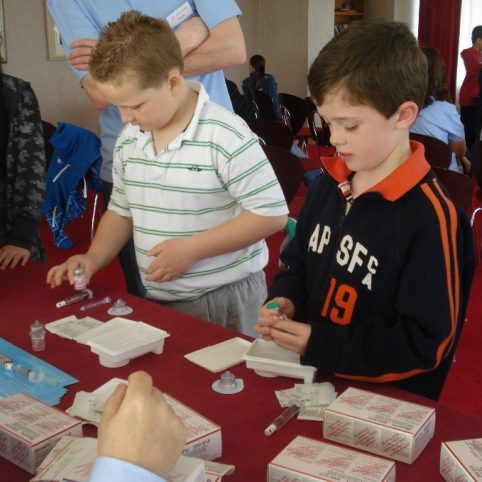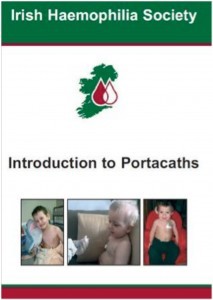Factor
Each bleeding episode must be promptly treated by an intravenous infusion of the clotting factor concentrate which is deficient. Once the bleeding stops, pain rapidly diminishes and use of the limb returns. The concentrate is administered as an intravenous injection, manufactured as a white powder which is reconstituted with sterile water, that is provided with the factor. The Factor VIII and Factor IX used for the treatment of haemophilia is called recombinant factor. Recombinant Factor VIII and Factor IX products used in Ireland are produced by cell lines using re-combined DNA. What cannot be emphasised enough is that a person with haemophilia must have treatment as soon as a bleed starts. It prevents further bleeding and pain and, most importantly, reduces the likelihood of permanent damage to joints (target joints).
Prophylaxis
It is recommended that all children with severe factor deficiencies should be commenced on a programme of factor prophylaxis before their second birthday or earlier if they have experienced any joint bleeds. Prophylaxis involves small regular (2-3 per week) injections of factor to prevent spontaneous bleeding and to minimise traumatic bleeding. Prophylaxis is given three times a week for Factor VIII deficiency and twice a week for Factor IX deficiency. This treatment regime, although time consuming and sometimes difficult to learn, will prevent joint damage and lead to an improved quality of life.
Port-a-Caths
In some young children where venous access is difficult and injections are stressful for both the child and the parent it is recommended that a Port-a-Cath be fitted. Port-a-Caths are used to provide access to veins and are inserted under general anaesthetic. The Port-a-Cath is inserted under the skin usually in the chest area. When the Port has been inserted there is no longer a need for injections into the veins so treatment is painless and therefore less stressful.
Click on the image below to download a copy of the IHS publication Introduction to Portacaths.
If you click on the link below you will find an article written by Dr. Beatrice Nolan, Consultant Haematologist in Our Lady\’s Children\’s Hospital Crumlin in relation to Port-a-Caths.
If you would like to look at a video recommended by O.L.C.H.C. in relation to \’Peripheral IV Training\’ entitled \’Gateway to Independence\’, please click on the following link:

